Hi ! We hope this site helps you! ٩(ˊᗜˋ*)و As an Amazon Associate, we earn from qualifying purchases without additional cost. Click to read more about our Privacy Policy or Affiliate Disclosure
With this lesson, you will learn additional sound that can be made by adding a tiny circle or quotes or made by combining some of the shape in Hiragana.
As a quick info, you will not remember a new shape in this part 2 since all the shape has been covered in Part 1! (hurray!?).The chart you saw in Part 1 isn’t actually the full hiragana chart. You can check out the full chart below. And as you can see, the chart is showing up more sound but note that you won’t see any new shape !
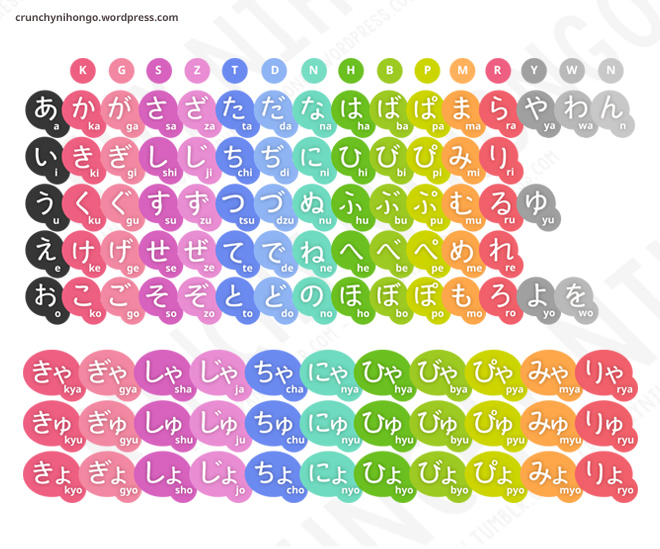
TINY CIRCLE
The first one we gonna review is the shape with additional tiny quote and circle. The tiny circle is only used to change

ぱ ぴ ぷ ぺ ぽ (PA PI PU PE PO)
How to remember it?
Well… we all love pies! yes
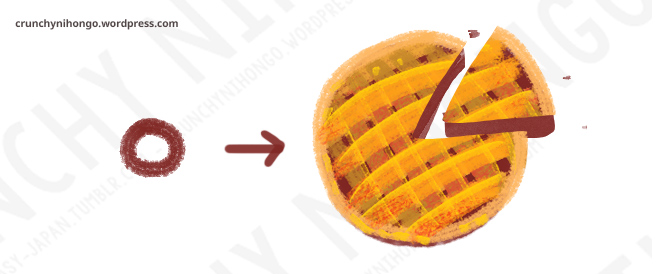
Mnemonics
When grandma makes delicious Apple pie, the kids
TINY QUOTES
The quotes create additional 4 set of sounds.

When the quotes placed on top of H row letter, the sound change into B. So it goes like this:
ば び ぶ べ ぼ (BA BI BU BE BO)
Mnemonics
Think of


When placed on top of T row letter, the sound change into D. With exception of TSU become DZU, not DU. (TSU also is an exception in Hiragana… so it’s kinda predictable). The sound goes like this:
When the quotes placed on top of H row letter, the sound change into B. So it goes like this:
だ ぢ づ で ど (DA DI DZU DE DO)
Mnemonics
Think of a
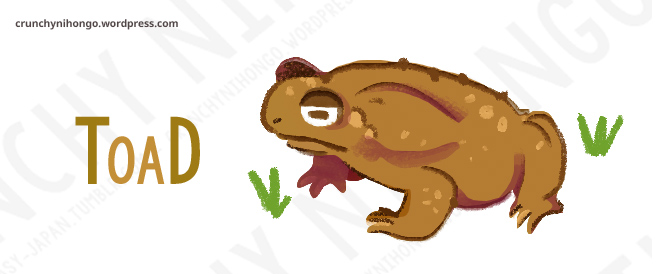

When placed on top of S row letter, the sound change into D. With exception of SHI become JI, not ZI . (SHI also is an exception in Hiragana… so it’s kinda predictable). The sound goes like this:
When the quotes placed on top of H row letter, the sound change into B. So it goes like this:
ざ じ ず ぜ ぞ (ZA JI ZU ZE ZO)
Mnemonics
A mother says to you… “
You lower down your voice, and you can hear the baby sound… “


When the quotes placed on top of K row letter, the sound change into G. So it goes like this:
ガ ぎ ぐ げ ご (GA GI GU GE GO)
Mnemonics
*you hear a trumpet sound*… who is it ?
To the one who doesn’t know who is he, he’s one famous American saxophone player.If you aren’t familiar with the name, you can think of a
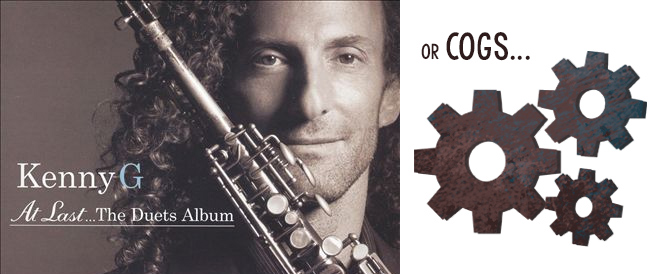
ぢ and じ difference
Both voiced as JI. Most of the time, you will use
Combination Sounds
The combination set sound only based on
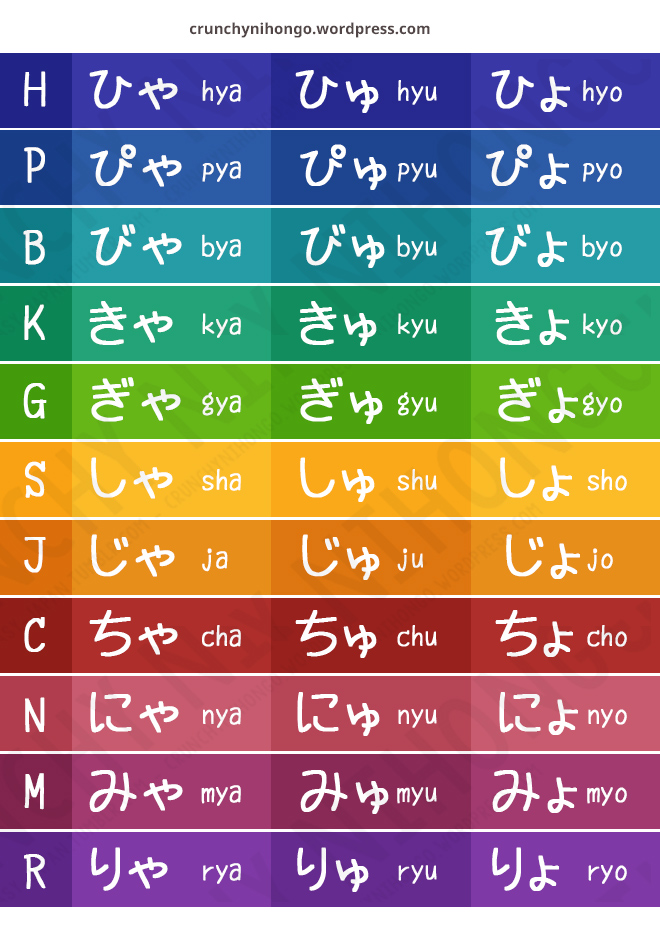
And here’s the sound file of each set:
HYA-HYU-HYO
PYA-PYU-PYO
BYA-BYU-BYO
KYA-KYU-KYO
GYA-GYU-GYO
SHA-SHU-SHO
JA-JU-JO
CHA-CHU-CHO
NYA-NYU-NYO
MYA-MYU-MYO
RYA-RYU-RYO
CONGRATULATIONS! Oh, I mean… おめでとう
You’ve mastered Hiragana! The first doorway to Japanese language!! Be proud of yourself, and now go and practice what you’ve learned! You are now able to read almost all books written for Japanese children! Do you know that the Japanese version of Pokemon game is mostly written in hiragana ? And now you don’t have to be afraid of kanji anymore. If you cannot read it, you can read the hiragana written above/below it to know how to read the kanji (it’s called Furigana). Some interesting game which have Furigana are game from Level 5.
Now, the mnemonics you saw,will indeed help you to remember the shape. But a lot of reading practice is still needed to lock up the hiragana on your long term memory. Practice is the only way to increase your reading skill. To practice hiragana, a very good resource would be Japanese children book. But that kind of resource might not be easy to find. So here’s a page which will help you with your reading practice: Hiragana reading practice .Be sure to check it out before moving on with another lessons!
Now what?
“I have mastered Hiragana, able to read children books and now i can read some of the hiragana written here and there… Now what ??” you say…
I recommend that you to learn the basic grammar of Japanese next to get used to the Japanese language structure. Or if you want to move on to master Katakana, that’s fine too. But note that you won’t find much katakana in your starting journey to learn Japanese. Hiragana will be enough for now 🙂
What’s next?
Learn the Japanese basic grammar
• Introduction to Japanese Grammar
• Basic – Common Greetings and Set-phrase
Want some challenge?:
• Learn Katakana , the 2nd alphabet of Japanese

In the hiranga picture at the begining of the article, should the ‘hu’ be ‘fu’ instead? In guide 1, it was marked as an irregular.
Great learning source BTW. Thanks for putting this together.
You’re right! We’re working on a new one so it will be fixed on the new version. Thanks for reporting 😉